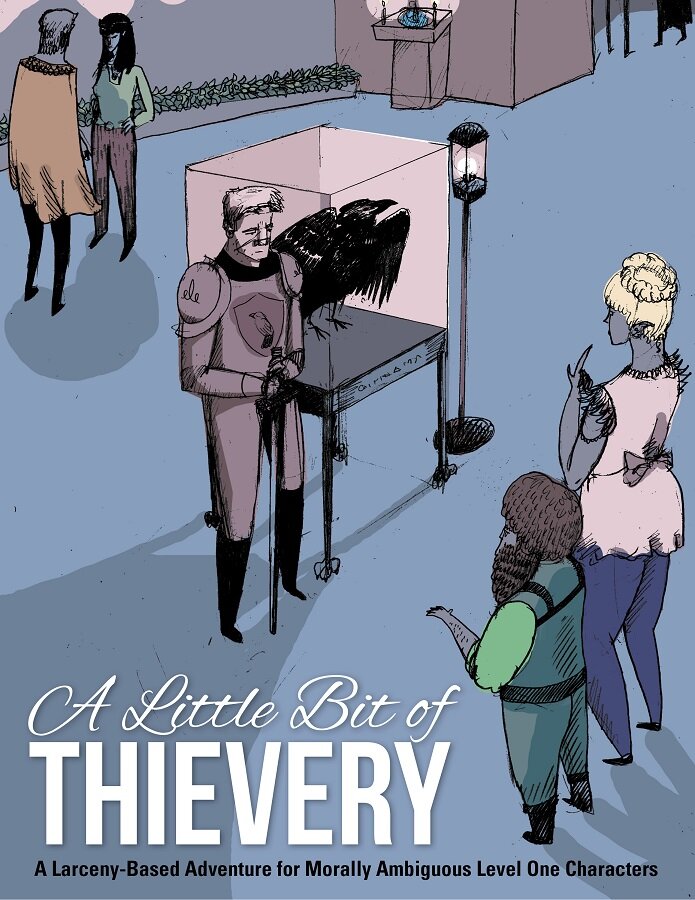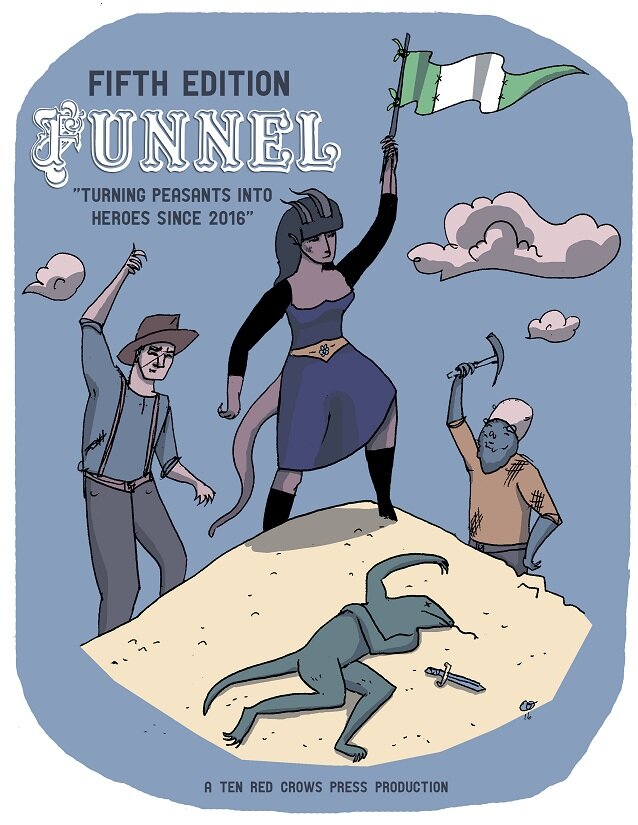Six months ago I purchased Further Afield, a supplement to Beyond the Wall, even though I didn't actually own the game. I found the ideas represented in Further Afield refreshing and a wonderful take on building a collaborative sandbox with your players.
The incompleteness of owning a supplement without the core title bothered me, and I eventually broke down and bought the core game.
The short and sweet of it.
Beyond the Wall is an OSR RPG that is designed to be "zero-prep". The designers, citing family issues, real lives, and general growing up wrote the game so that the characters, scenario, and world could be built and played within a single session. To accomplish this lofty goal, the game provides some basic tools: character packs for the players and threat packs for the DM.
Playbook: The Best Innovation.
Although the game provides traditional "build your character" rules (role 4d6, pick a class, et cetera), the real innovation is Character Playbooks. The playbooks offer a "life path" during creation. For each stage of the character's youth, the player randomly determines what happens through a dice roll. The results fill out the character's stats, round out the town, create lore, and provide motivation for the scenario. If something truly interesting catches the player's eye, just once, they can select something as opposed to accept the dice roll.
Each result adds lore and bonds between characters that the players should be encouraged to expound upon. This answers one of the most awkward moments in party creation: How are you all friends?
The use of these playbooks are so innovative and refreshing, that I want to create Playbooks for D&D5e. The little snippets of lore created a better fleshed out character more than the background system of 5e.
Threat Packs
The threat packs integrated well with character creation. The DM takes all of the information that the players spout and uses it to shape the story. The threat packs even have some blank random tables that are filled in during character creation that decide critical plot events.
In my test game, a cult moves into town and they are probably up to no good. All the NPCs the players created were put on a table to determine who betrays the party (the random roll elected Harold the talking pig, no less). While a list of character's prized possessions and a random dice roll determined a secret object that the cult needed to complete their ritual. We now have an enemy with a motivation.
And the result?
Basically it worked. Character, town, and scenario creation took 45 minutes. Everyone went to go get a beer while I labored away and put the finishing touches on the scenario. We then played for 3 hours and all had a really good time.
Should you buy this?
Yes. It is a narrative driven game and designed to be really simple. If you want more crunch, you are going to have to go somewhere else. To me, the real innovation is the shared story telling environment within a D&D-like framework. Not only are the characters interacting in the world, but they help shape its construction. This felt like a fresh take on D&D. The idea of the shared character, town, and sandbox creation (covered in Further Afield) are worth the price of admission.
Beyond the Wall is $8, and Further Afield is $6. All the other small supplements are free. To me, the value of these books far exceed their cost.



